- News
- Reviews
- Bikes
- Components
- Bar tape & grips
- Bottom brackets
- Brake & gear cables
- Brake & STI levers
- Brake pads & spares
- Brakes
- Cassettes & freewheels
- Chains
- Chainsets & chainrings
- Derailleurs - front
- Derailleurs - rear
- Forks
- Gear levers & shifters
- Groupsets
- Handlebars & extensions
- Headsets
- Hubs
- Inner tubes
- Pedals
- Quick releases & skewers
- Saddles
- Seatposts
- Stems
- Wheels
- Tyres
- Tubeless valves
- Accessories
- Accessories - misc
- Computer mounts
- Bags
- Bar ends
- Bike bags & cases
- Bottle cages
- Bottles
- Cameras
- Car racks
- Child seats
- Computers
- Glasses
- GPS units
- Helmets
- Lights - front
- Lights - rear
- Lights - sets
- Locks
- Mirrors
- Mudguards
- Racks
- Pumps & CO2 inflators
- Puncture kits
- Reflectives
- Smart watches
- Stands and racks
- Trailers
- Clothing
- Health, fitness and nutrition
- Tools and workshop
- Miscellaneous
- Buyers Guides
- Features
- Forum
- Recommends
- Podcast
review
£149.99
VERDICT:
A great way to seat most tubeless tyres, with some very good features and a lifetime warranty
Huge gauge
High quality alloy build
Long hose
Multi-valve auto head
Bleed button
Swappable bar/handle
160psi limit
Long hose (pressure drop)
Weight:
3,182g
Contact:
At road.cc every product is thoroughly tested for as long as it takes to get a proper insight into how well it works. Our reviewers are experienced cyclists that we trust to be objective. While we strive to ensure that opinions expressed are backed up by facts, reviews are by their nature an informed opinion, not a definitive verdict. We don't intentionally try to break anything (except locks) but we do try to look for weak points in any design. The overall score is not just an average of the other scores: it reflects both a product's function and value – with value determined by how a product compares with items of similar spec, quality, and price.
What the road.cc scores meanGood scores are more common than bad, because fortunately good products are more common than bad.
- Exceptional
- Excellent
- Very Good
- Good
- Quite good
- Average
- Not so good
- Poor
- Bad
- Appalling
The Blackburn Chamber Tubeless Floor Pump is a top-class way to get your tyres seated, and keep them inflated. As with all things tubeless there's never a guarantee of success, but for all but the worst combinations you should be OK. With Blackburn's lifetime warranty, this may be the last floor pump you'll ever own.
Tubeless tyre setup is a beast of mythical proportions, the difficulty in besting it often trotted out by tubeless naysayers as the reason to stick with Robert Thompson's 1847 invention, the inner tube. Fortunately for those of us not inclined to be hanging about a roadside of a wet and windy Sunday morn faffing with spare tubes and bikes in bits, tubeless tyre compatibility and setup has come on in leaps and bounds.
> Find your nearest dealer here
When installing a tubeless tyre (or after adding sealant) one thing you almost certainly need in your shed is a tubeless charger tank of some design, to get the strong initial inrush of air to seat the tyre bead on the rim. The idea of a charger tank is to get a large volume – typical over a litre – of air up to around 150psi or more. A 35mm tyre is about two litres in volume, meaning allowing for leakage as the tyre seats, once the pressure is balanced out your tyre is about 50-60psi – approximately the safe maximum for tubeless.
As you can see, more means more in the successful-inflation stakes. I make the volume of the Blackburn Chamber to be about 1.2 litres – so paired with the maximum pressure of 160psi, it will be an ill combination of tyre and rim that would defeat it.
Build quality
The construction of the Chamber pump is first class. Most of it is alloy, and the feeling is of real quality. Blackburn offers a lifetime warranty, which I'd say is well worth considering here, given the high pressure nature and finicky little parts inside anything with a gauge and switches.
Analogue gauge
The standout feature here is the enormous analogue gauge, sitting at the top of the chamber where it's most visible. Both psi and bar scales are easy to read, and there's a bright green zone indicating charged status. I'm a big fan of analogue gauges, finding them easier to read and more stable than digital ones which can jump about the place as pressures settle.
On the left side of the gauge is the Charge/Pump/Release lever. Again this is alloy, and represents the business end of functionality. You set the lever to charge by locking it in the up position, then, once the pressure is reached, flicking it down to inflate. The lever is spring-loaded, so the release to dump air into the tyre is given its best shot.
Hose
The air is delivered via a 5ft-long supple hose on a swivel mount, which is therefore able to reach valves a good 2m above floor level. This makes the Chamber a great pump for checking and maintaining pressure in the tyres of bikes hanging from wall or ceiling racks, or on the roof of a car. A downside of the long hose is restriction of airflow compared with a shorter length, but I'll get to that. The hose is stored by looping around a hook at the bottom, then pressing into a recess in the centre of the handle, allowing the pump to be picked up and moved by the handle as well. Tidy.
Pump head
The pump head is a multifunction auto head, accepting Presta, Schrader and Dunlop valves without adjustment. The locking lever is again alloy, and is curved to be easily actuated by your thumb without needing a second hand.
The standout feature of the head, and a major boon of the whole pump, is the red bleed button. This lets you release air with perfect timing, to settle on your desired pressure. The head has a reversible rubber collar, by default set for 20mm or shorter Presta, so most people would need to flip if for longer than 20mm. The air bleed doesn't work on Dunlop valves.
Checking the accuracy of the Chamber against several other pumps and the excellent SKS Airchecker gauge, they were all within a psi of each other – and a difference easily accounted for in the pffsss! removing/attaching the next head. So that's a win.
Base
The base of the Chamber is metal, and it sits firmly on a flat surface. It's perfectly-doable to plant your feet over each wing of the base for added stability if needed. Also in the base is a water drain screw, which gets partially loosened off every now and then to drain out moisture.
Handle
A unique feature of the Chamber is the handle – it's literally a cut-down flat handlebar measuring 410mm wide. It has quite aggro grips that wouldn't look amiss on a mountain bike, and has a standard 31.8mm four-bolt faceplate holding it attached – so yes, you could swap it out for any handlebar you wanted. I found the width to be about right, and I think easier to pump than most handles which are usually a lot narrower.
Performance
It takes 50 strokes to get the Chamber fully charged to 160psi – not bad considering the volume it's pressurising. That pressure is reached with little additional effort in the second half of the gauge, unlike some pumps which get much stiffer as they approach their maximum.
A 28mm 700C tyre gets to 70psi with 25 strokes, to 100psi with 36 strokes, and a 2.2in 29er mountain bike tyre gets to 25psi with 40 strokes. These may not seem impressive – and indeed they aren't, taken in the raw. The Joe Blow Digital floor pump and even my venerable decade-old Blackburn Charger both inflated to these pressures with around three-quarters the number of strokes compared to the Chamber.
The reason the Chamber seems sluggish here is because it's also pressurising the chamber at the same time – it takes about nine strokes to charge 25psi in the Chamber, meaning stroke for stroke the Chamber is about on par with other non-tank pumps, but there's no escaping that inefficiency for standard pressure checks and inflations. Indeed, you want the pump to pass through once the air tank has discharged. This is so that once the tyre has seated you can then continue to inflate, to finally pop the beads over the rim hooks if not fully seated, or to buy more time to slosh sealant about any leaks.
This would possibly be a deciding factor in whether the Blackburn Chamber is for you. You're mostly paying about £100 extra for the tank capacity and integration here – going off a few experiments with the Birzman 1.2L tank, the Chamber seems about the same volume.
Of course, in the world of tubeless, nothing is ever perfect – including the Blackburn Chamber. I seated a number of tyre and rim combinations no problem, first time, and the tank volume meant little or no need for quick follow-up strokes to seat beads properly. But when pairing a Mason X Hunt Four Season rim with a 35mm René Herse Bon Jon Pass tyre there was simply no way the Chamber could get it to seat both beads at once. I tried every trick in the book – removing the valve core completely, pinching the sidewalls out, laying it flat and so on – no luck. The tyre did eventually seat with a blast from the Birzman Pump Up tank – inflated to its max by a 220psi pump, and using the trick of removing the brass inner valve core to give maximum throughput while still having a Presta body to screw on to.
> Buyer’s Guide: 13 of the best track pumps
The Birzman has a similar volume, but critically it runs at 220psi and has a hose less than half the length of the Chamber, with a simpler head arrangement. There's a lot to be said for more pressure, and reducing anything in the path of flowing air. Often even a small gain can make the difference between a successful seating and frustration – in this case I found the limit of the Chamber's capability, but again, they aren't designing for worst cases.
> What they don’t tell you about running tubeless tyres…
All this said, you don't have to spend £150 for pump-booster integration – Stu liked the Beto Surge pump at £60, and closer to the Chamber in build and capability is the £140 Topeak Joe Blow Booster that Jon gave a 3.5/5 score to – only a two-year warranty, mind.
Overall, the Blackburn Chamber left me impressed, even at the premium price. It's borderline-artisanal quality, with great features like the long hose, auto-valve head, super-large accurate gauge and bleed button. A lifetime warranty is a real plus when you're spending this much, and the ergonomics of the wide bar are great. Recommended.
Verdict
A great way to seat most tubeless tyres, with some very good features and a lifetime warranty
road.cc test report
Make and model: Blackburn Chamber Tubeless Floor Pump
Size tested: 160psi max
Tell us what the product is for and who it's aimed at. What do the manufacturers say about it? How does that compare to your own feelings about it?
It's for people wanting to maintain tubeless tyre systems for all sizes, as well as for general floor pump duties.
Blackburn says: 'If you're a tubeless tire convert, you'll wonder how you lived without this pump. Just pressurize the chamber and with a simple flip of the burly switch, all that air floods the tire, giving it no option but to seal and air up. Once the tire's in place, flip the switch back to bypass the chamber and you can top it up accurately with the giant gauge.'
Tell us some more about the technical aspects of the product?
Blackburn lists:
* Two-position switch to charge or inflate
* Direct-to-valve technology lets you pump tire instantly
* Includes riser bar with comfortable grips
* 31.8mm stem clamp accommodates your favourite handlebar
* Includes 4ft hose
* 2.75in top-mounted gauge lets you read pressure without stooping
* Button on the pump head lets you micro-adjust pressure
* Works with Presta/Schrader/Dunlop valves with the flick of a lever
* Aluminium barrels
Rate the product for quality of construction:
10/10
Everything's top-notch.
Rate the product for performance:
8/10
All the features come together into a great pumping experience.
Rate the product for durability:
10/10
It's built like a tank.
Rate the product for comfort (if applicable)
8/10
The wide bars and smooth action make for a good pump experience. The grips may be harsh for softer hands, mind.
Rate the product for value:
6/10
£150 is indeed a lot – but it's pretty much on a par for price and capability with the premium offerings of the best brands, like Topeak and Lezyne. And you're getting a lifetime guarantee.
Tell us how the product performed overall when used for its designed purpose
With one notable exception (the one tyre it couldn't seat), it was a brilliant pump.
Tell us what you particularly liked about the product
The long hose, and the huge gauge.
Tell us what you particularly disliked about the product
Really, it's only the lower max pressure – it would be great to see it hit 200.
How does the price compare to that of similar products in the market, including ones recently tested on road.cc?
Beto's Surge pump is £60; Topeak's Joe Blow Booster is £140.
Did you enjoy using the product? Yes
Would you consider buying the product? Yes
Would you recommend the product to a friend? Yes
Use this box to explain your overall score
If the max pressure was more like 200psi I'd bet the Chamber would seat every tyre possible – that's really the only thing I can mark it down on. That said, it'll probably do all the tyres you need, and the lifetime warranty is a real factor too. It's very good.
About the tester
Age: 46
I usually ride: Merida Ride 5000 Disc My best bike is: Velocite Selene
I've been riding for: Over 20 years I ride: A few times a week I would class myself as: Expert
I regularly do the following types of riding: cyclo cross, club rides, general fitness riding, mtb, Dutch bike pootling.
Living in the Highlands, Mike is constantly finding innovative and usually cold/wet ways to accelerate the degradation of cycling kit. At his happiest in a warm workshop holding an anodised tool of high repute, Mike's been taking bikes apart and (mostly) putting them back together for forty years. With a day job in global IT (he's not completely sure what that means either) and having run a boutique cycle service business on the side for a decade, bikes are his escape into the practical and life-changing for his customers.
Latest Comments
- Capt Sisko 3 min 43 sec ago
Every single photo is showing the front, now whilst that's important you as a rider have eyes, brakes and a brain so to a certain degree you can...
- E6toSE3 5 min 21 sec ago
Liked except... you and I (I'm age 70) are confident cyclists who can look backwards (I had a few years with a neck problem that discouraged me...
- David9694 53 min 59 sec ago
Calls for Oxfordshire transport chief to resign blocked...
- Mr Blackbird 1 hour 13 min ago
Depends how you ride them. The current trend among many pros is to ride in a track style looking down at the front wheel. Ok for racing on closed...
- Bungle_52 3 hours 18 min ago
That one was completely different though, it was a driver not a car as in the other 3. So 1 in 4 of the stories manage to follow reporting guidelines.
- Rendel Harris 5 hours 10 min ago
Absolutely they could have. Tarmac is a petroleum-based product and its surface can be very oily when it's newly laid. This is particularly the...
- ROOTminus1 11 hours 12 min ago
I'm glad the article went into more detail and cleared things up, the headline had me worried that some autonomous building had run rampant and...
- mark1a 11 hours 31 min ago
Still here, just showing a few signs of wear and tear. Hopefully still serviceable for some years to come.
- Rendel Harris 12 hours 16 min ago
How can you know that you are "equally fearful" as "any female cyclist"? There is no possible way of quantifying such emotions and female cyclists...
- chrisonabike 12 hours 48 min ago
I think it would be fairer to blame the moon - as in "my client is a loony".








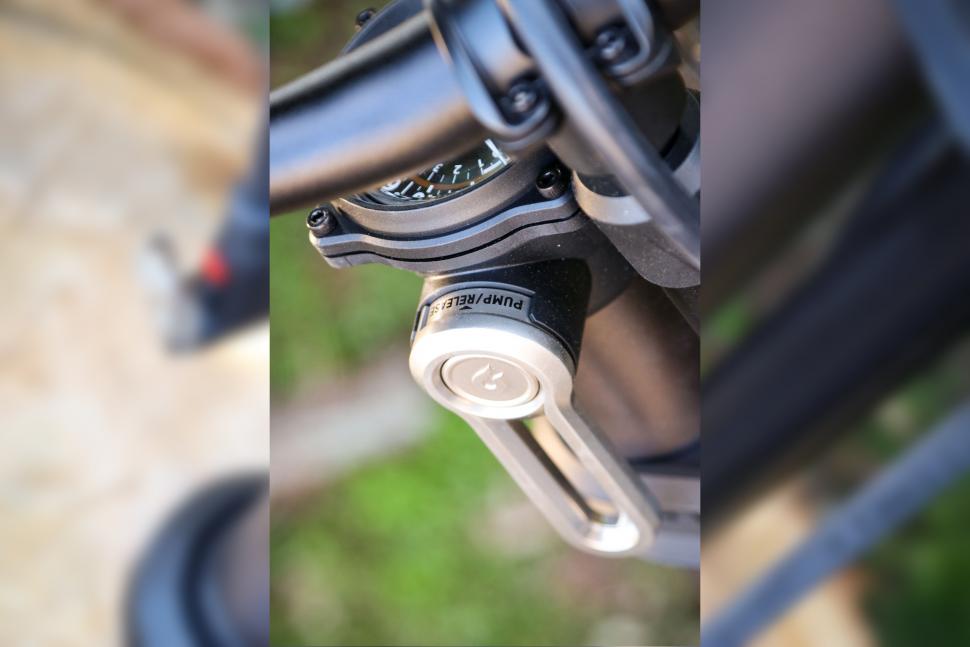


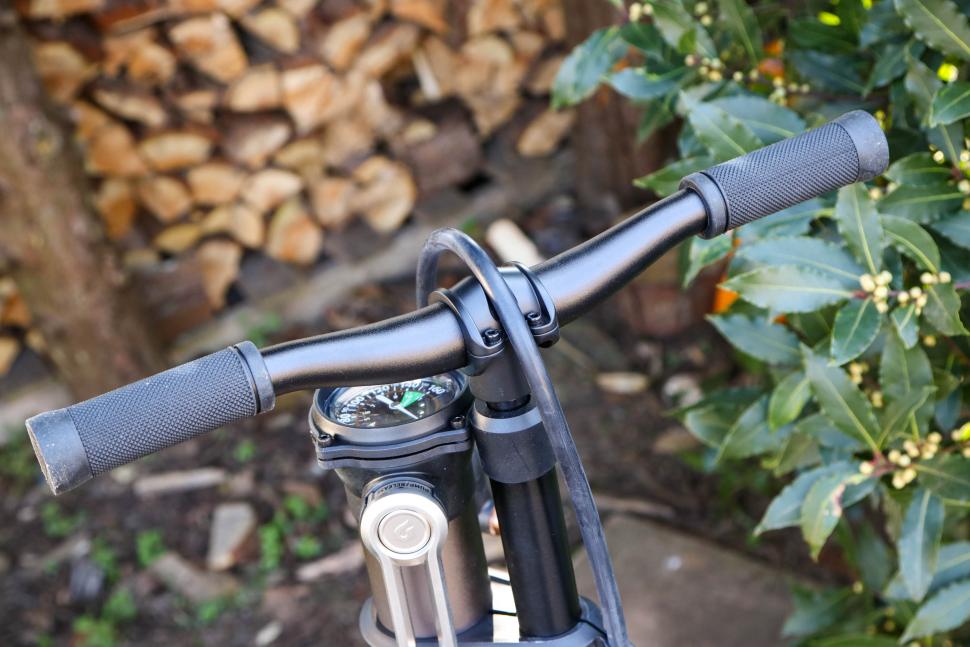


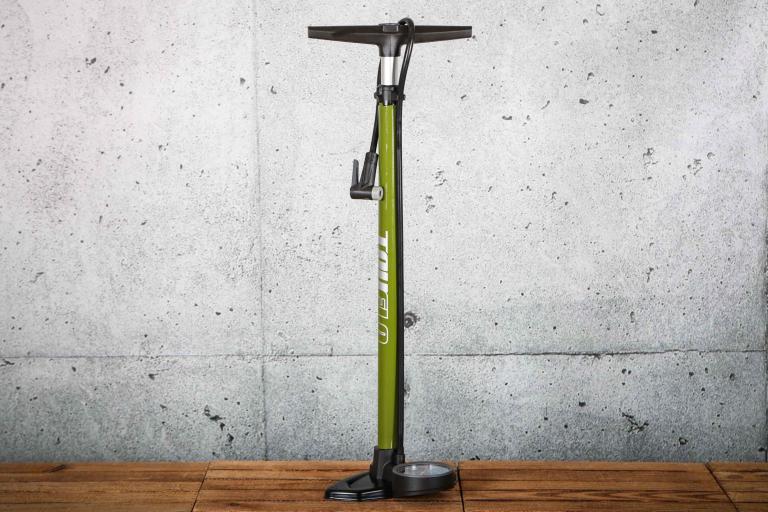
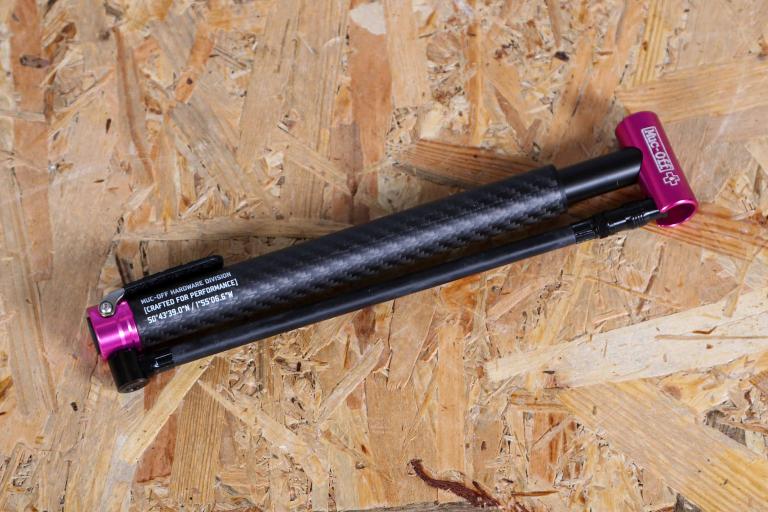
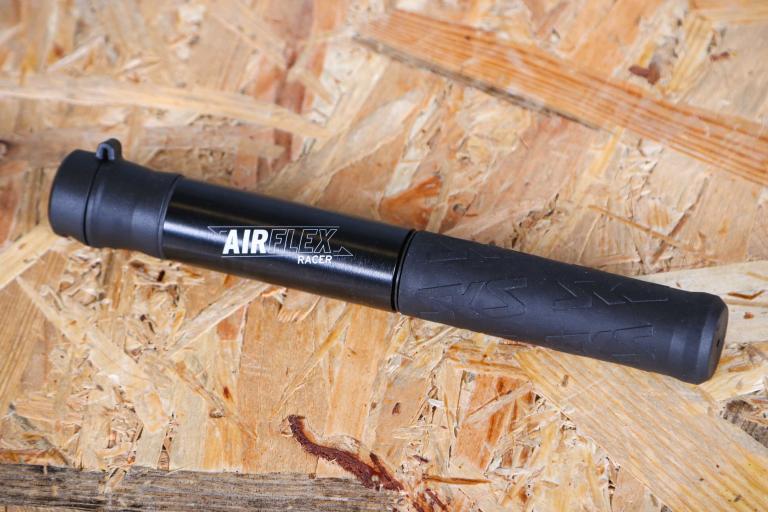
Add new comment
6 comments
Perhaps these chamber pumps are needed for larger volume MTB tyres, but 've never had any difficulty inflating tubeless road tyres with my 'ordinary' floor pump - and I'd recommend you at least try that before you drop any money on something like this.
When I switched to tubeless (and I would add that I'm not a convert yet) I bought a Beto pump - in preparation and I have to say that it is one of the worst purchases I've made as a cyclist: cheap, plastic landfill - the sort of thing you buy in lockdown.
Why I'm not a convert: basically the faff. Before I dropped £50 a tyre, plus rim tape (£15), valves (£20) and 'sealant' - I use speech marks because some just don't work very well on high pressure road tyres (£10) - when I had a puncture I used to stop, put in a new £4 inner tube which took five minutes by the roadside and continued my ride. I ride 12-15,000 km a year on my road bike - plus some commuting - and I probably had 3-4 punctures a year as my tyres wore thin or I go unlucky.
Now, we'd all like punctures to go away, but still want to ride on soft fast tyres. Going tubeless seems to offer this. And there's a whole industry that wants to sell you more shit. But if the sheer cost doesn't put you off the sealant dries out and needs replacing. When you do this, its a 30 minute job cleaning the tyres out and the rims with solvent. The the rim tape seems to come unstuck periodically, which means cleaning the tyres and rims, replacing the tape (£15) and then spending another 30 minutes putting new rim tape on... the last time I did this I was so pissed off I put on three layers.....by luck or judgement the tyres are staying up ... but I have others that leak air, slowly - not fast enough to get my to take the tyres off, spend 30 minutes cleaning them, re-taping the wheels....and it all costs.
Chris, you appear to be the Bermuda Triangle of Road Tubeless
Something has gone terribly wrong that's for sure.... I guess it all contributes to GDP....
Worth adding that you don't need this sort of thing anymore if you want to go tubeless. Modern tubeless tyres on modern rims inflate with an ordinary track pump. Worst case scenario you can seat the tyres with a Co2 canister. Save yourself the £150.
Caveat: SOME modern tubeless tyres on SOME modern rims inflate with an ordinary track pump.
The Hunt wheels in question are about 6 months old, as are the tyres. Both are the latest iteration of their respective designs, and both are 'tubeless first'.
As ever in cycling, YMMV.
So is it not possible to bypass the chamber and just pump air direct to the hose?